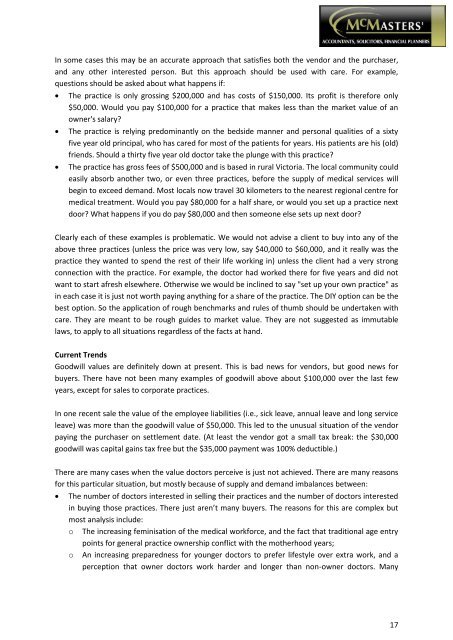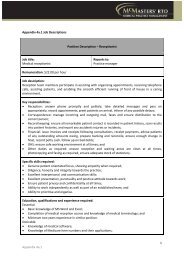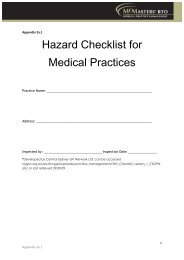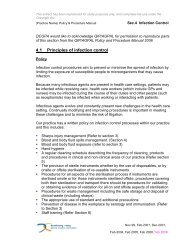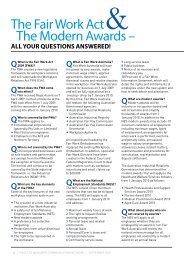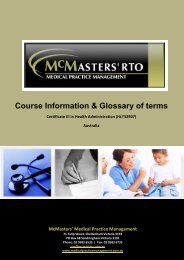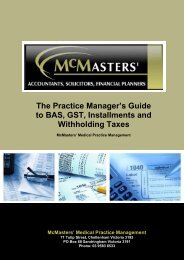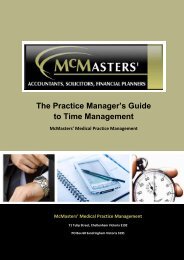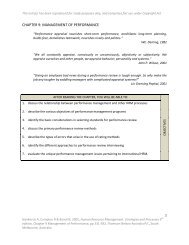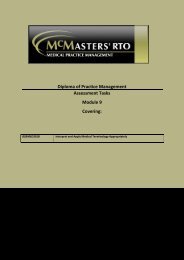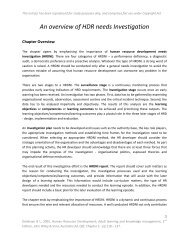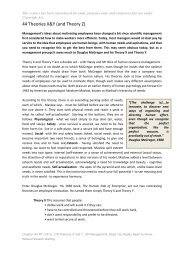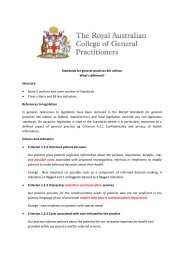The Practice Manager's Guide to Buying a Practice - McMasters ...
The Practice Manager's Guide to Buying a Practice - McMasters ...
The Practice Manager's Guide to Buying a Practice - McMasters ...
Create successful ePaper yourself
Turn your PDF publications into a flip-book with our unique Google optimized e-Paper software.
In some cases this may be an accurate approach that satisfies both the vendor and the purchaser,and any other interested person. But this approach should be used with care. For example,questions should be asked about what happens if:<strong>The</strong> practice is only grossing $200,000 and has costs of $150,000. Its profit is therefore only$50,000. Would you pay $100,000 for a practice that makes less than the market value of anowner's salary?<strong>The</strong> practice is relying predominantly on the bedside manner and personal qualities of a sixtyfive year old principal, who has cared for most of the patients for years. His patients are his (old)friends. Should a thirty five year old doc<strong>to</strong>r take the plunge with this practice? <strong>The</strong> practice has gross fees of $500,000 and is based in rural Vic<strong>to</strong>ria. <strong>The</strong> local community couldeasily absorb another two, or even three practices, before the supply of medical services willbegin <strong>to</strong> exceed demand. Most locals now travel 30 kilometers <strong>to</strong> the nearest regional centre formedical treatment. Would you pay $80,000 for a half share, or would you set up a practice nextdoor? What happens if you do pay $80,000 and then someone else sets up next door?<strong>The</strong> Doc<strong>to</strong>rs’ <strong>Guide</strong> <strong>to</strong> Starting a <strong>Practice</strong> September 20063Clearly each of these examples is problematic. We would not advise a client <strong>to</strong> buy in<strong>to</strong> any of theabove three practices (unless the price was very low, say $40,000 <strong>to</strong> $60,000, and it really was thepractice they wanted <strong>to</strong> spend the rest of their life working in) unless the client had a very strongconnection with the practice. For example, the doc<strong>to</strong>r had worked there for five years and did notwant <strong>to</strong> start afresh elsewhere. Otherwise we would be inclined <strong>to</strong> say "set up your own practice" asin each case it is just not worth paying anything for a share of the practice. <strong>The</strong> DIY option can be thebest option. So the application of rough benchmarks and rules of thumb should be undertaken withcare. <strong>The</strong>y are meant <strong>to</strong> be rough guides <strong>to</strong> market value. <strong>The</strong>y are not suggested as immutablelaws, <strong>to</strong> apply <strong>to</strong> all situations regardless of the facts at hand.Current TrendsGoodwill values are definitely down at present. This is bad news for vendors, but good news forbuyers. <strong>The</strong>re have not been many examples of goodwill above about $100,000 over the last fewyears, except for sales <strong>to</strong> corporate practices.In one recent sale the value of the employee liabilities (i.e., sick leave, annual leave and long serviceleave) was more than the goodwill value of $50,000. This led <strong>to</strong> the unusual situation of the vendorpaying the purchaser on settlement date. (At least the vendor got a small tax break: the $30,000goodwill was capital gains tax free but the $35,000 payment was 100% deductible.)<strong>The</strong>re are many cases when the value doc<strong>to</strong>rs perceive is just not achieved. <strong>The</strong>re are many reasonsfor this particular situation, but mostly because of supply and demand imbalances between:<strong>The</strong> number of doc<strong>to</strong>rs interested in selling their practices and the number of doc<strong>to</strong>rs interestedin buying those practices. <strong>The</strong>re just aren’t many buyers. <strong>The</strong> reasons for this are complex butmost analysis include:o <strong>The</strong> increasing feminisation of the medical workforce, and the fact that traditional age entrypoints for general practice ownership conflict with the motherhood years;o An increasing preparedness for younger doc<strong>to</strong>rs <strong>to</strong> prefer lifestyle over extra work, and aperception that owner doc<strong>to</strong>rs work harder and longer than non-owner doc<strong>to</strong>rs. Many17


